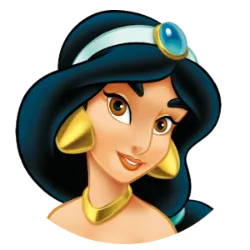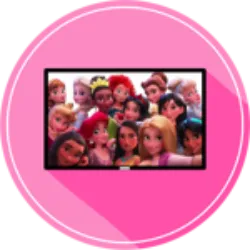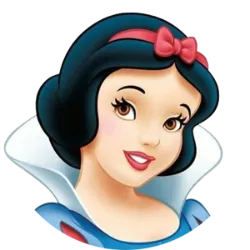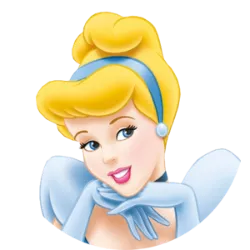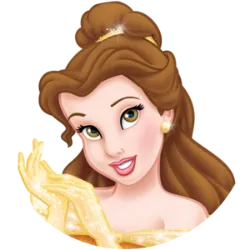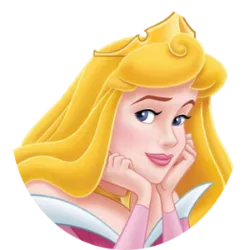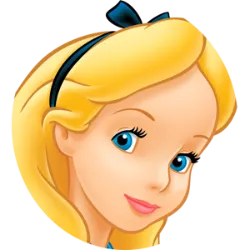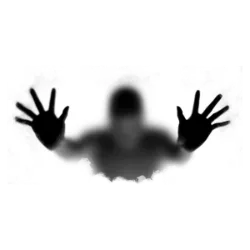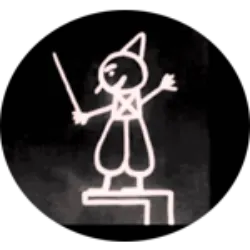Aladdin almost had a different look
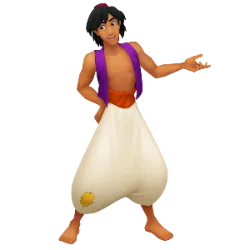
The protagonist of Aladdin (1992) underwent significant changes before gaining his final look. At the beginning of production, Disney animators created the character with a more youthful style and features inspired by actor Michael J. Fox, famous at the time for Back to the Future. The idea was to present Aladdin as an ordinary and clumsy young man, but the team realized that this did not convey the necessary charm for the character.
To make him more mature and charismatic, the animators decided to redesign him, this time taking inspiration from the star Tom Cruise. The goal was to give Aladdin a more confident and attractive appearance, making his relationship with Jasmine more engaging and convincing. The change was a success, helping to transform Aladdin into one of the most memorable heroes of Disney animations.
This change also influenced his personality. While the first version was more naive, the final Aladdin became smarter and more charismatic, characteristics that became essential to his story and his growth throughout the film.
Disney changes the setting of Aladdin
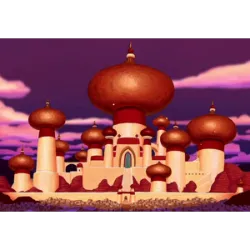
The original script for Aladdin (1992) mentioned Baghdad as the city where the story was set. However, due to the political context of the time, Disney chose to change the name of the location to Agrabah, a fictional city. The decision was made during the production of the film, as the Gulf War, which took place between 1990 and 1991, involved Iraq and other countries in the Middle East, making the name Baghdad sensitive to Western audiences.
The change allowed Disney to create a more fantasy-like and timeless setting, without direct links to historical events or specific countries. Agrabah was developed with an aesthetic inspired by various cultures of the Middle East and South Asia, with influences from Persian, Indian and Arabic architecture.
This adaptation reinforced the magical and exotic aspect of the film, allowing the story of Aladdin to be told without concern for geopolitical issues. Since then, Agrabah has become one of the most iconic fictional locations in the Disney universe, being remembered as the city of One Thousand and One Nights, where the protagonist embarks on his journey alongside the Genie and Princess Jasmine.
Test yourself with one of these challenges 👇
Discover some interesting facts about Jasmine
Jafar's music was cut from Aladdin
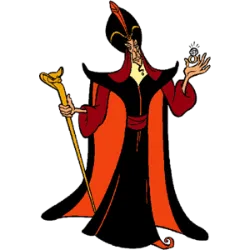
During the production of Aladdin (1992), the producers created a solo song for Jafar, titled "Why Me?". The song would have given the villain a musical moment similar to that of other Disney antagonists, such as Ursula in The Little Mermaid and Scar in The Lion King. However, despite having been composed and recorded, the scene was cut from the film.
The reason for the removal was the pacing of the plot. The directors felt that the song slowed down the plot and was not essential to the development of the character. Instead, they opted to keep Jafar as a more direct and threatening villain, without the need for a song of his own to express his evil plans.
Although it was not included in the final version of the film, "Why Me?" can still be found in bonus features and special editions of the Disney classic. Additionally, Jafar had his opportunity to sing in the Broadway musical based on the film, where he was given a new song, "Diamond in the Rough", highlighting his ambitions and his quest for ultimate power.
O Gênio de Aladdin
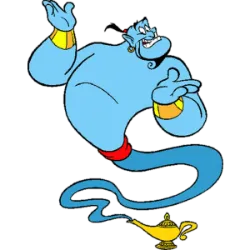
The iconic character Genie from Aladdin (1992) was developed especially for Robin Williams, one of Hollywood's greatest comedians. Disney wanted to take advantage of the actor's talent for improvisation and made him the heart of the film. During filming, Williams improvised so many lines that the team accumulated more than 16 hours of recorded material.
The animators had to adapt the animation to the actor's unique style, something rare at the time. To do this, they created scenes in which the Genie would rapidly change shape, allowing Williams to do impressions of celebrities such as Arnold Schwarzenegger, Jack Nicholson and Groucho Marx.
The performance was so remarkable that it redefined the way animated characters were voiced, inspiring future Disney productions to rely more on improvisation. Despite the huge success, Robin Williams had disagreements with the studio over contractual issues, but his version of the Genie remains one of the most memorable in animation.
Aladdin was inspired by The Thief of Bagdad
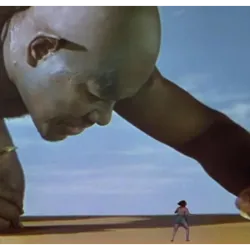
Although Aladdin (1992) is widely known for its inspiration from the tale of One Thousand and One Nights, Disney's animation was also heavily influenced by the classic film The Thief of Bagdad (1940). The feature film, directed by Ludwig Berger, Michael Powell and Tim Whelan, featured elements that became fundamental in Disney's version, such as a Machiavellian villain, a powerful genie and even a magic carpet.
The structure of the story of the 1940 film bears many similarities to Aladdin. In both productions, the protagonist is a young adventurer who becomes involved with a magical artifact and faces an antagonist thirsty for power. The character Jafar, for example, shares characteristics with Jaffar, the villain of the 1940 film, including his boundless ambition and desire to control the city.
Another great legacy of The Thief of Bagdad was the innovative use of special effects to create a fantastical world, something that Disney improved upon in its animation. Furthermore, the idea of a flying carpet as an ally of the hero was maintained, becoming one of the most iconic elements of the 1992 film. Thus, Aladdin combined influences from the Arabian tale and classical cinema to create one of Disney's most memorable stories.
Iconic imitations for Aladdin
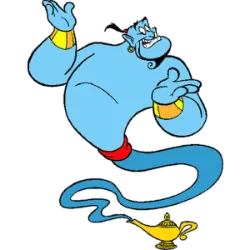
Robin Williams' performance as the Genie in Aladdin (1992) revolutionized voice acting in animation. Known for his talent for improvisation, the actor did not strictly follow the script and created several lines spontaneously. During filming, Williams played around with different voices and incorporated impersonations of celebrities, such as Arnold Schwarzenegger, Jack Nicholson and even a TV presenter.
The actor's improvisations were so remarkable that the animation team had to adapt the Genie's expressions and gestures to match his fast-paced, comedic style. It is estimated that Williams recorded around 16 hours of material, with countless variations for each scene. His innovative interpretation led Disney to reinvent the way animated characters were created, making the Genie one of the studio's most beloved characters.
Despite the huge success, the relationship between Robin Williams and Disney was not without conflicts. The actor agreed to receive a below-standard salary to voice the character, on the condition that his voice would not be used for commercial purposes. However, Disney broke the agreement, leading to a disagreement that was only resolved years later. Even so, his performance in the film remains a landmark in the history of animation.
Jasmine: The princess who broke the mold
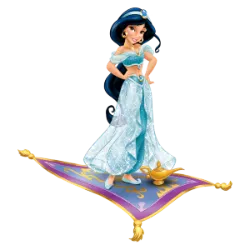
Princess Jasmine from Aladdin (1992) marked a new era for Disney's female characters. Unlike her predecessors, she wasn't waiting for a prince to save her. Determined and independent, Jasmine rejects an arranged marriage and dreams of a life beyond the palace walls, becoming one of the first princesses to openly defy the traditions of her society.
Her appearance was also heavily influenced by Arabic culture. The animators drew inspiration from traditional Middle Eastern clothing but added a modern twist, creating the iconic blue outfit. Jasmine was also the first Disney princess to have a pet, the tiger Rajah, who symbolizes her strength and loyalty.
Originally, Jasmine was going to have a minor role in the plot, but the writers expanded her role to make her a more active character. In the original version, the princess's voice was performed by Linda Larkin, while the songs were recorded by Lea Salonga, who also voiced Mulan years later.
Jasmine has become an icon among Disney princesses, representing courage, freedom and authenticity. Her impact was so great that, in the live-action Aladdin (2019), the character gained even more prominence and a new solo song, Speechless, reinforcing her journey of empowerment.
Test yourself with one of these challenges 👇
HOME
